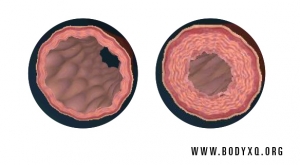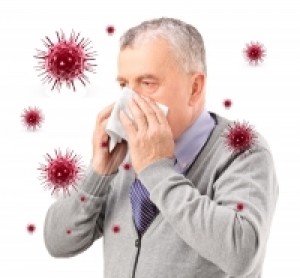Vitamin C is a vital nutrient for human health and survival. It is not only a powerful antioxidant and immune booster, but it also supports collagen connective tissue formation and builds extracellular matrix, which is the “glue” that binds the body’s cells together. It is important for faster wound healing and prevention of various chronic conditions. Optimum amounts of vitamin C effectively protect the body and cardiovascular system against biological rusting. Additionally, there are several other important functions of vitamin C. It is a cofactor for a series of biological enzymes, which are important for the improved metabolism of cholesterol, triglycerides and other risk factors of heart disease. It is an important energy molecule needed to recharge energy carriers inside the cells. Vitamin C is essential for production of carnitine, the molecule that carries fatty acids into the mitochondria for energy production. It participates in biological recycling of vitamin E, glutathione and many other cell protective molecules, and when taken together with calcium, it increases calcium absorption. Vitamin C neutralizes various toxins in the body, and protects healthy cells from harmful substances and the effects of many pharmaceutical drugs.
The skin is not only the largest organ in the body, it is also a mirror of the health of the body’s internal organs. In addition to protection of inner tissue structures, the skin helps in regulation of body temperature and elimination of metabolic waste products. Many diseases of the digestive, cardiovascular, and nervous systems, and hormonal imbalances and inflammatory conditions are reflected on the skin. With approximately 20 square feet of surface area, the skin is primarily taken care of for cosmetic appeal. Thousands of skin care products cater to beauty and health conscious consumers who hope to avoid acne, discoloration and signs of aging, as well as skin cancer. It is estimated that the global skin care products industry revenue will be $102.3 billion by 2018.
Scurvy (known as “Sailor’s disease”) is a condition resulting from a complete depletion of ascorbic acid (vitamin C). It is a fatal disease characterized by a slow dissolution of connective tissue throughout the body including the walls of the blood vessels. This disease was quite common in earlier centuries, especially among sailors whose diet was deprived of vitamin C. During long voyages at sea many died within months from tremendous blood loss. Today fully developed scurvy is rare; however, subclinical scurvy is very common especially in the elderly, infants, children on special diets, and people with poor dietary habits.
Heart attacks and strokes have consistently remained the leading causes of deaths. Atherosclerosis, the underlying cause of these diseases, results in 17 million deaths each year. Yet, high blood cholesterol levels, a fatty diet, and obesity have been blamed as the causes of heart disease. However, cutting down dietary fat and the artificial reduction of blood cholesterol with cholesterol-reducing medicines have not been successful in addressing this issue. Atherosclerotic plaques occur primarily in the coronary arteries rather than in the entire 60000-mile-long vascular system. The absence of plaque in the veins and the fact that animals do not suffer from atherosclerosis while humans do cannot be explained by conventional medicine and the cholesterol theory of heart disease.
After heart disease, cancer is the second leading cause of death worldwide. One in two men and one in three women will be diagnosed with some type of cancer in their lifetime. Despite novel initiatives, the American Cancer Society estimates that by 2020 the number of new cancers will increase to more than one million cases per year in men, and more than 900,000 cases per year in women. Melanoma, lung, breast, and prostate cancer are the most commonly diagnosed among the new cancers. Although cigarette smoking - the most common risk factor for cancer - still remains high, obesity and other metabolic disorders can contribute to and increase breast, colon, uterus, pancreas, and kidney cancers.
Cardiovascular diseases, including heart attacks and strokes, continue to be the leading causes of deaths resulting in more than 17 million deaths each year worldwide. Cardiovascular disease (CVD) manifests as atherosclerosis, high cholesterol, high blood pressure, arrhythmia, and heart failure and has many more symptoms affecting the heart and blood vessels. Additionally, other metabolic diseases such as obesity and diabetes further increase the risk of CVD.
Influenza (flu) is a common viral disease affecting up to 20% of the world’s population. In most cases, the flu is benign, but it can also have serious consequences especially in people with compromised immune systems, the elderly, and children. It is estimated to cause 250,000 to 500,000 deaths worldwide each year1.
The flu virus easily spreads through the air or by direct contact. In most cases, simple measures such as frequent hand washing and good nutrition are effective in preventing the flu. However, every year media fuelled campaigns promote influenza vaccination as the best protection against the flu. The influenza vaccine global market generates close to $3 billion a year and it is estimated to reach $4.2 billion by the end of 2014. Despite aggressive marketing it has been difficult to prove the efficacy of the flu vaccine since the flu virus frequently mutates (changes) and resistance to the vaccines is very common.
In the US alone, 2.7 million people are at risk of a serious stroke and other health problems triggered by irregular heartbeat or arrhythmia. The most common form of arrhythmia is atrial fibrillation, which contributes to 80,000 deaths annually in the US. It is predicted that by 2050 as many as 12 million people will be affected by this condition. Treatment of atrial fibrillation is associated with tremendous cost for the patient and our health care system.
The American Heart Association’s 2011 report states the government’s cost associated with treating atrial fibrillation ranges from $6-$26 billion a year.
Atrial fibrillation occurs when the cells that create or conduct the biological electricity of the heart beat are not functioning properly. This can be manifested by rapid or irregular heartbeat, palpitation, dizziness and in severe cases shortness of breath, and chest pain. This condition affects the elderly, people with diabetes, high blood pressure, thyroid abnormalities, or any type of heart disease, as well as younger athletes.
In any form of irregular heartbeat, you should consult with your doctor. However, do not be surprised that conventional medicine cannot always identify the root cause of this problem, mainly because it misses the most common cause of the malfunction in the metabolism of cardiac cells.
Considering the lack of satisfactory options, we evaluated the possibility that the dysfunction of the heart muscle cells may be a result of a long-term deficiency of vitamins and other micronutrients, which are the key carriers of bioenergy in the metabolism of heart cells. Such deficiency especially affects the “electrical” cells of the heart, which need large amounts of energy to create the electrical impulse for a heartbeat. Optimum bioenergy generation in cells depends on micronutrients such as, vitamin C, lysine, CoQ10, carnitine, the B vitamins, and many others.
Our double-blind placebo controlled multi-center clinical study* involved 131 patients between 18 and 70 who were taking anti-arrhythmic medications with little success. All participants were randomly divided into two groups: half took a multi-nutrient program daily and half an identically looking placebo. Evaluation after three and six months of the study showed that after just three months, about 23% of the participants taking supplements experienced a decrease of arrhythmic episodes and after six months, this number almost doubled to 43%. Other study participants in the supplement group experienced a significant decrease in the frequency of arrhythmic episodes. In addition, there was a remarkable improvement in their quality of life as shown by a specific questionnaire.
The results of this clinical study bring hope for millions of people suffering from atrial fibrillation and those who want to maintain healthy heart function.
* M. Rath, T. Kalinovsky, A. Niedzwiecki
Journal of the American Nutraceutical Association 2005, 8(3): 19-25







